Unpicking the past
Over the past year, we have had many a conversation with individuals from across Reading and the surrounding area. These conversations have highlighted the role of the sewing machine in their lives, in the lives of their friends and families and, as the stories were shared and the laughter flowed, it drew attention to the amazing ways these fascinating machines can act as a conduit for connecting with the experiences and memories of others.
Across five different community sessions, we used our Barnett collection of sewing machines as a prompt to collect the sewing memories of participants. Some of these were written responses, others were group discussions.
Many thanks to attendees of our fashion week session, our Chat, Craft and Play visitors, the Sewing Space Social, Reading Museum sewing group, and Jelly for their involvement.
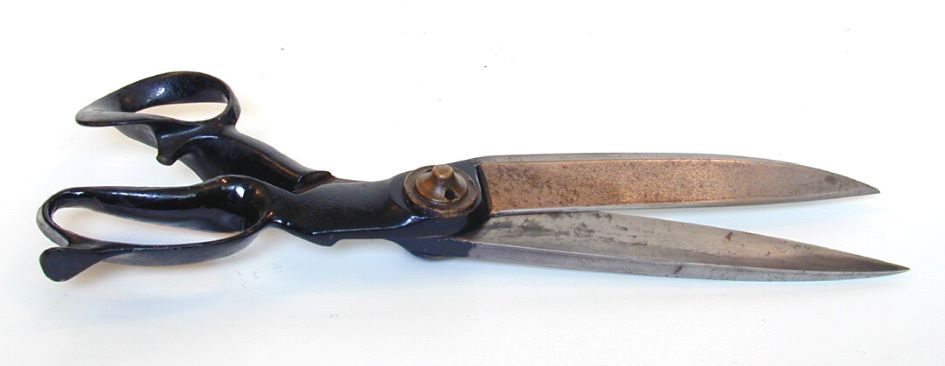
Rebecca
These tailoring scissors were originally used by a cutter at Bradley’s in London, c.1907.
MERL 97/66

Judith
This 60Q chain stitch machine was a model popular in the 1960s.
MERL 81/93
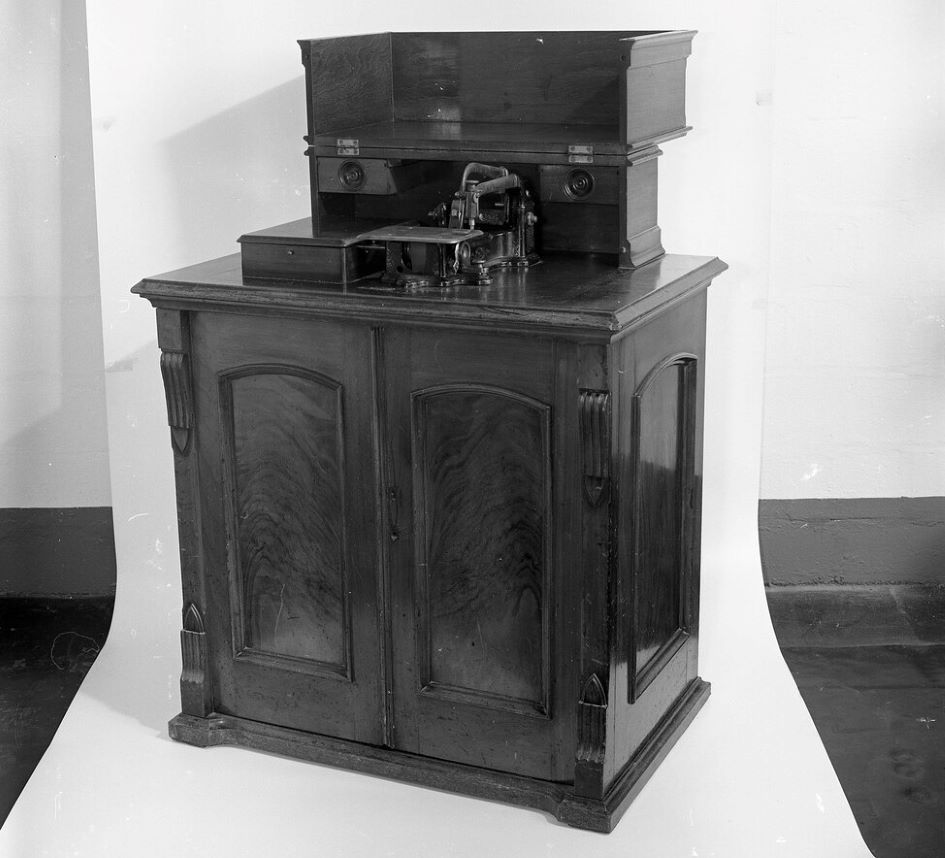
Margaret
This Wheeler & Wilson sewing machine comes with a treadle and cabinet.
MERL 81/139
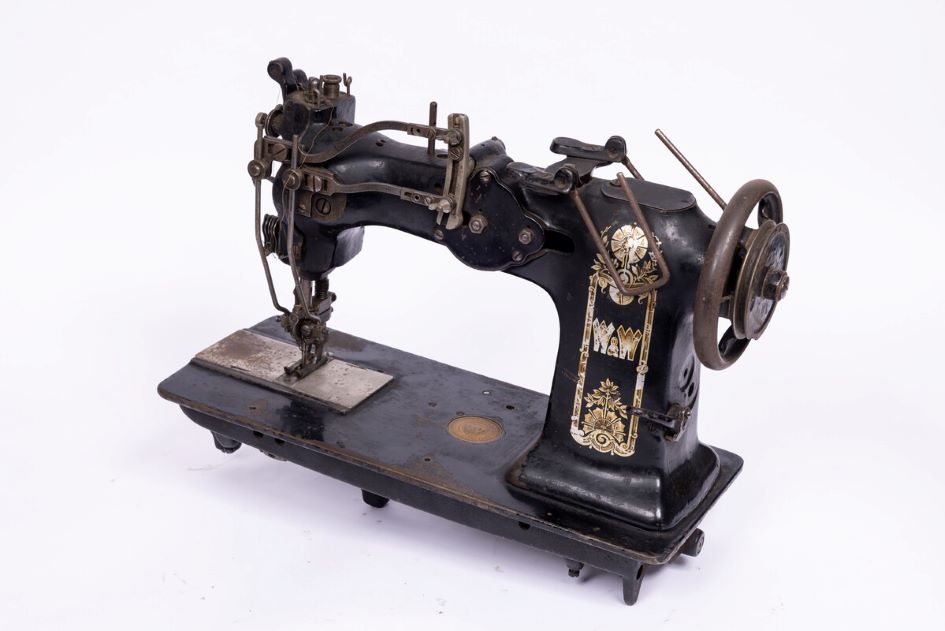
Jane
An industrial Wheeler & Wilson hem stitching machine.
MERL 81/51
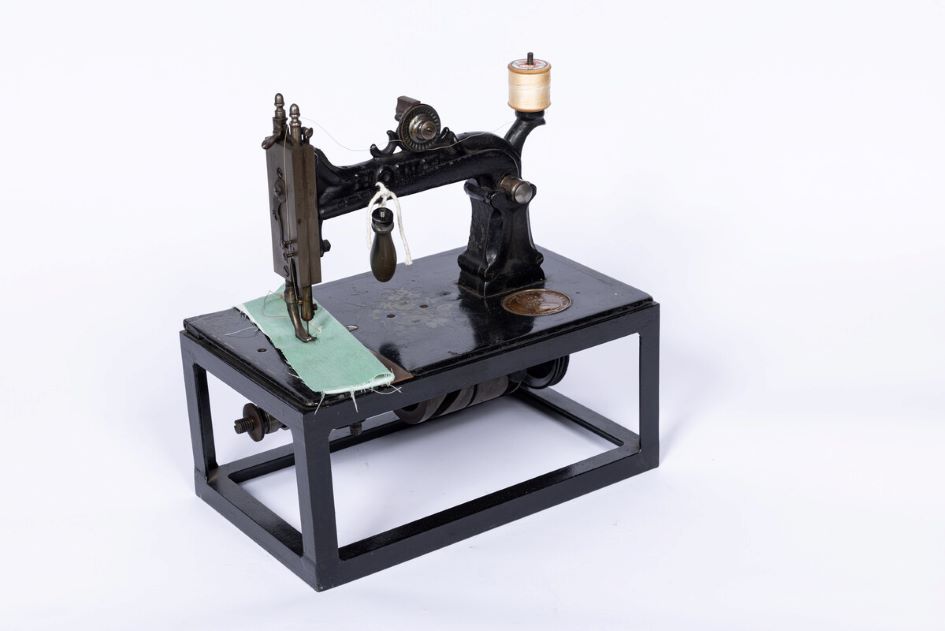
Liz
A Howe lock-stitch sewing machine, which is a good example of an early domestic treadle machine.
MERL 81/70
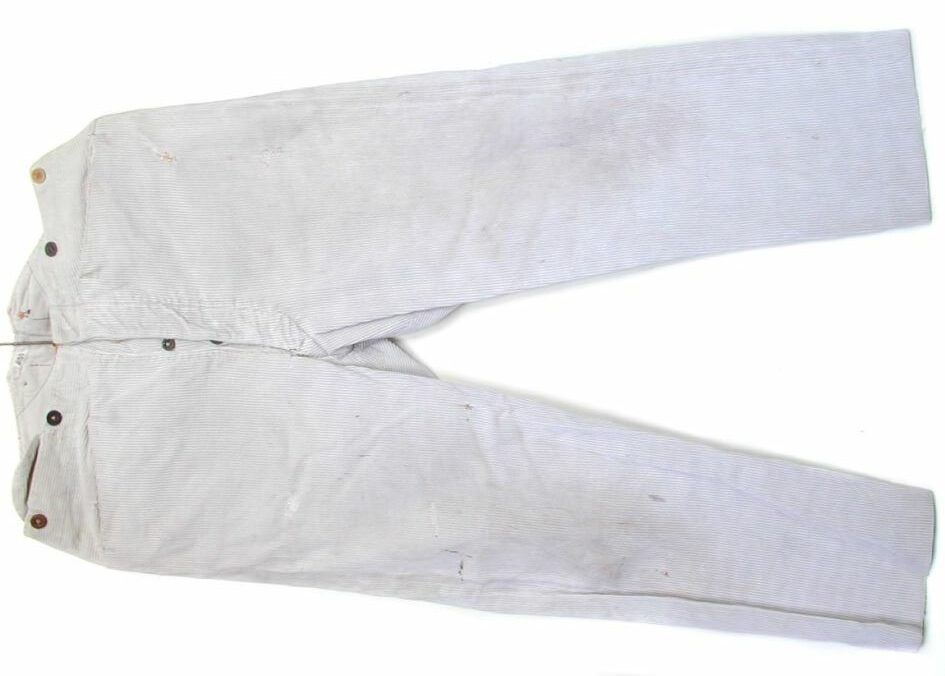
Sandra
Corduroy trousers, typically worn by farmers in the early twentieth century.
MERL 89/1
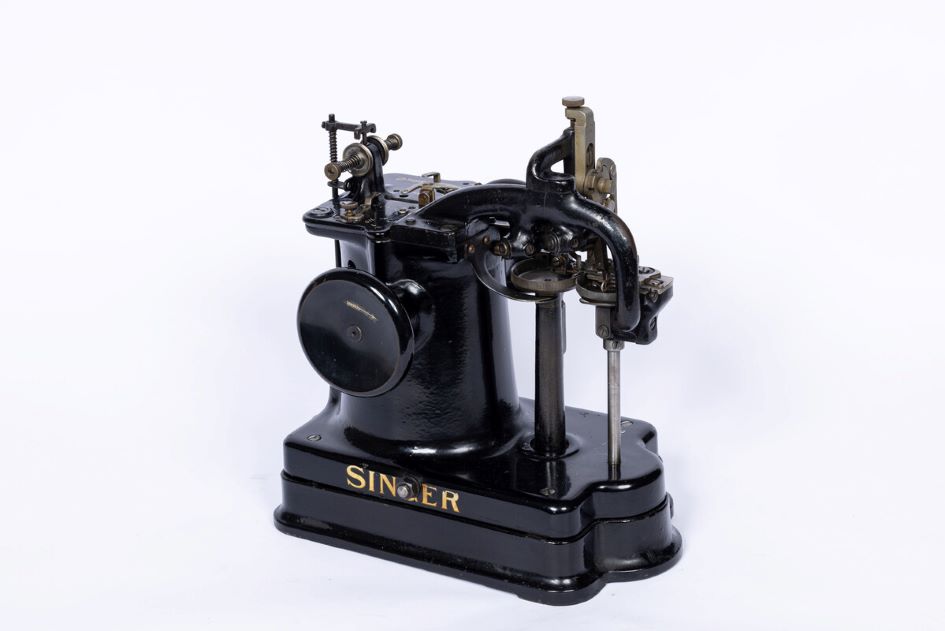
Jill
A Singer 46K52 machine dating to c. 1939.
MERL 81/137
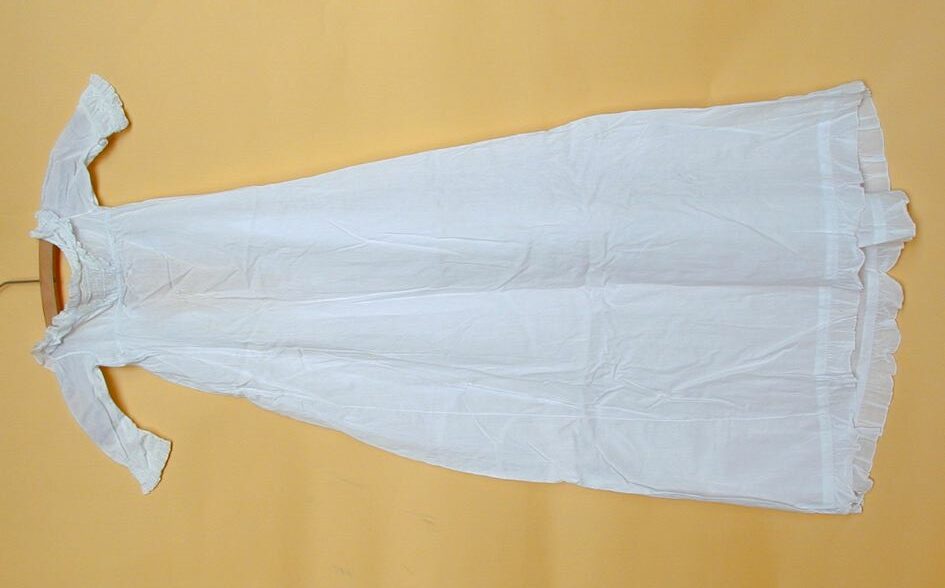
Judy
This white cotton dress was described as an “old family garment”, so was likely handed down several times.
63/115
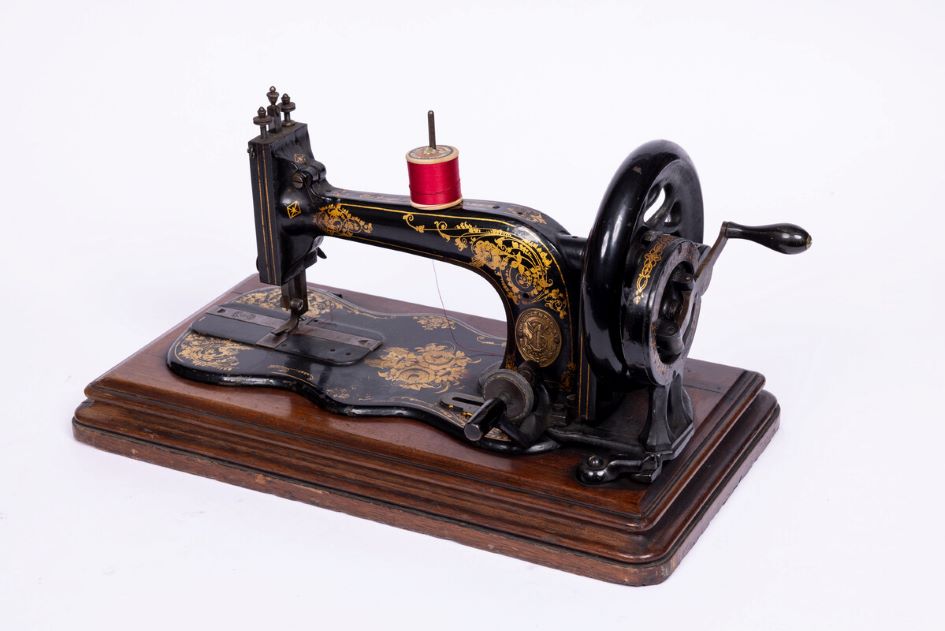
Luidmila
The Singer “New Family” machine was arguably the most influential sewing machine of all time.
MERL 81/97
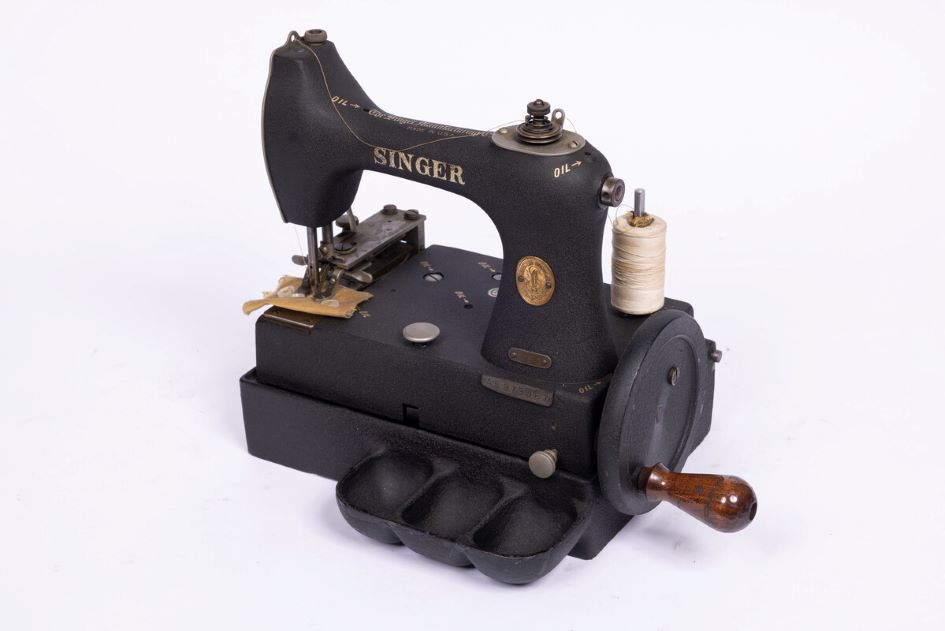
Kate
A button sewing machine, suitable for light alterations to garments.
MERL 81/41
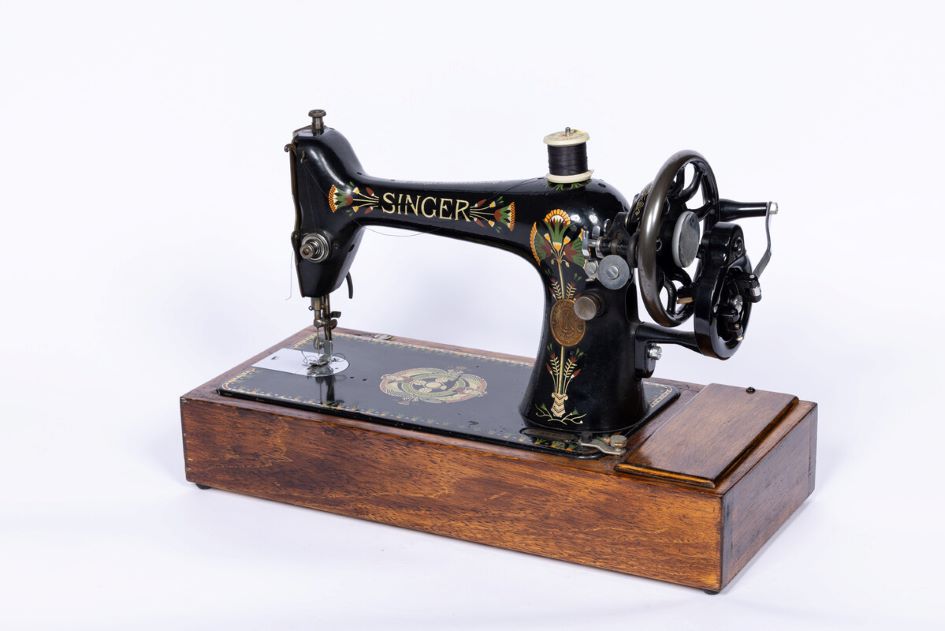
Linda
An intricately decorated (and very heavy!) Singer 66k sewing machine.
MERL 81/77
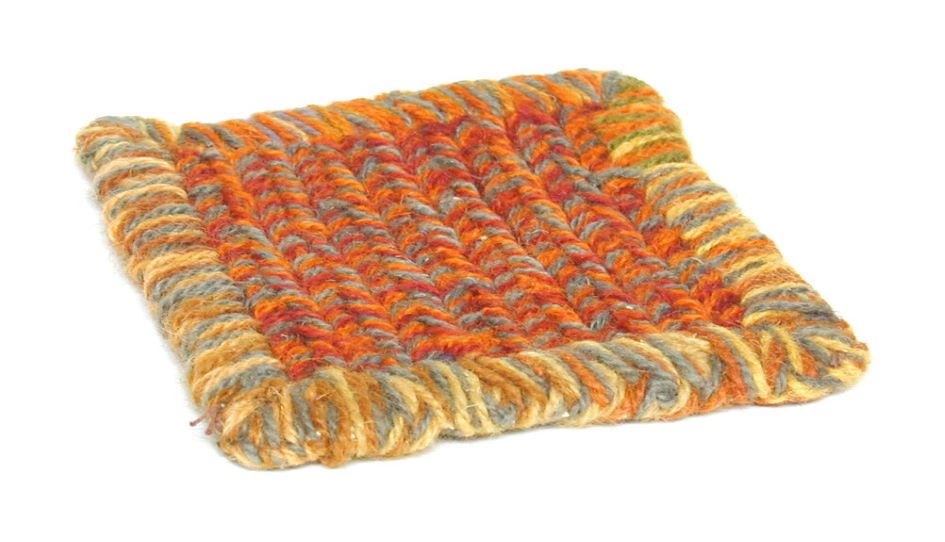
Lizzie
A rag rug, which was made with spare or re-used scraps.
MERL 74/131/53
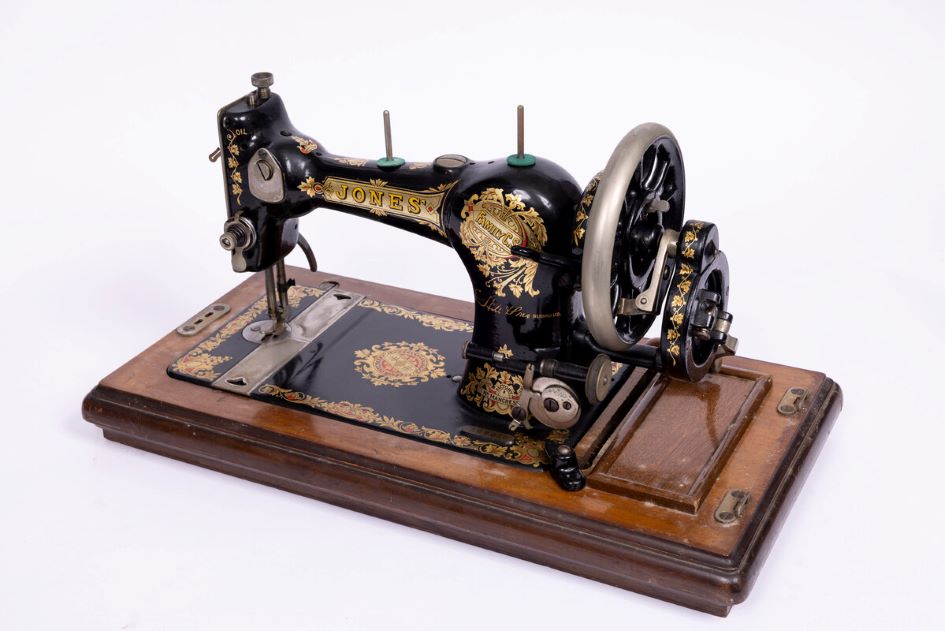
Linda
A Jones Family CS sewing machine – one of the most recognisable British made machines of the 19th century.
MERL 81/82
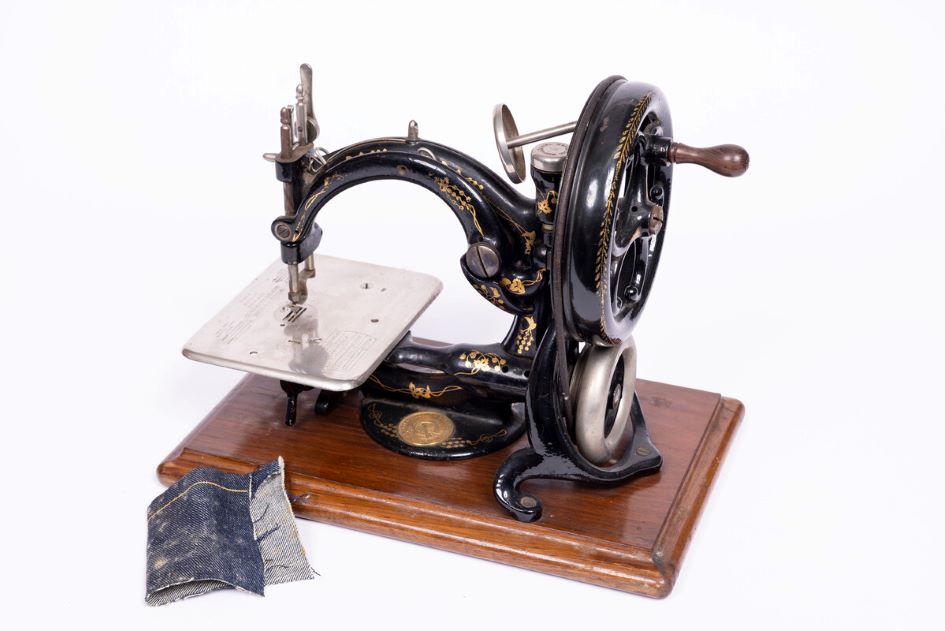
Gemma
Early electric machines could be loud and frightening to children. In contrast, even as early as the 1870s, hand powered machines like this Willcox & Gibbs model were marketed as “silent”.
MERL 81/55
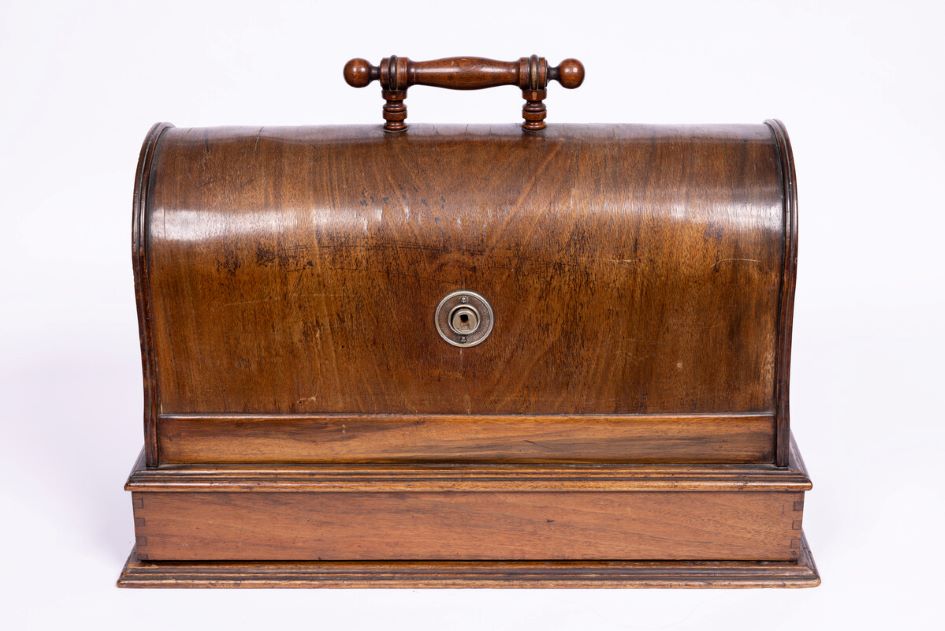
Mary
Many sewing machines were stored in wooden cases like this one for protection and ease of transport.
MERL 81/35
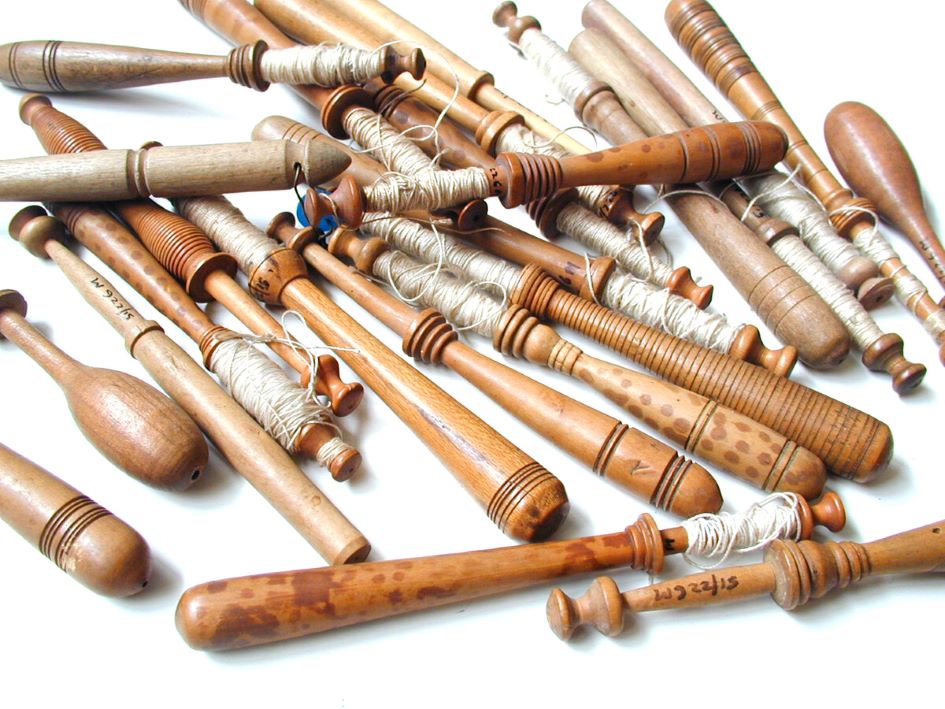
Stephania
These lace bobbins from Ickford, Buckinghamshire, all have long necks and thistle tops.
MERL 51/226
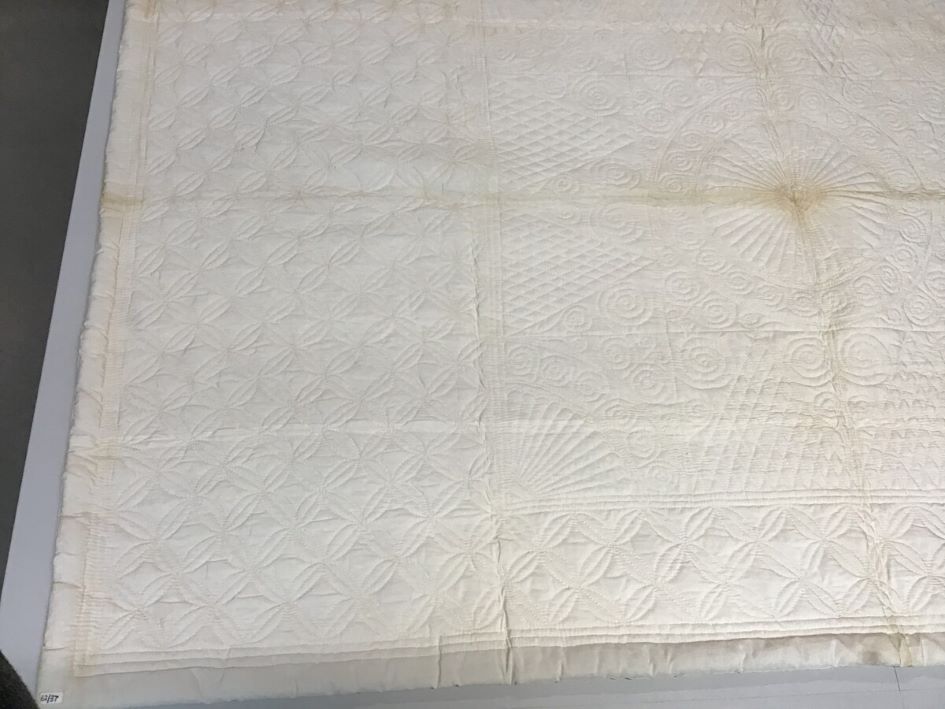
Jane
This quilted bedcover made in Blaenau Gwent follows a traditional Welsh pattern.
MERL 62/37
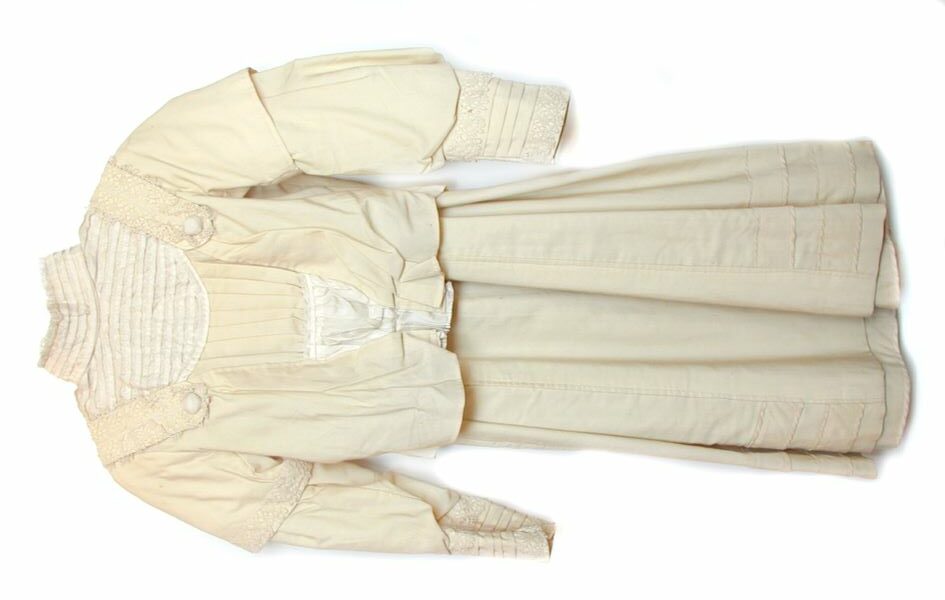
Renata
This cream cashmere wedding dress was made by a seamstress in Oxfordshire in 1910.
MERL 62/52
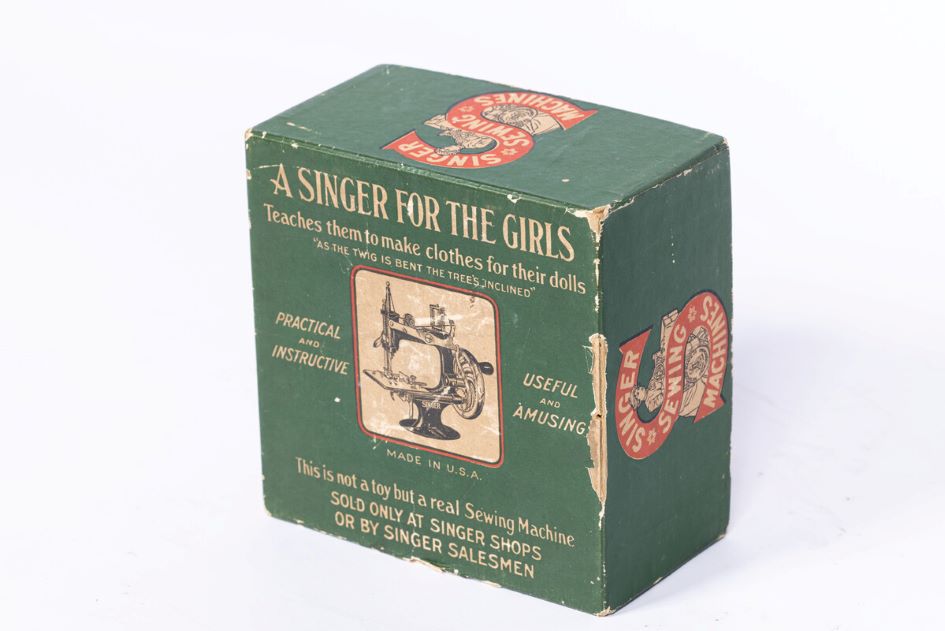
Barbara
The bright green and red of this sewing machine box was designed to appeal to children.
MERL 81/36
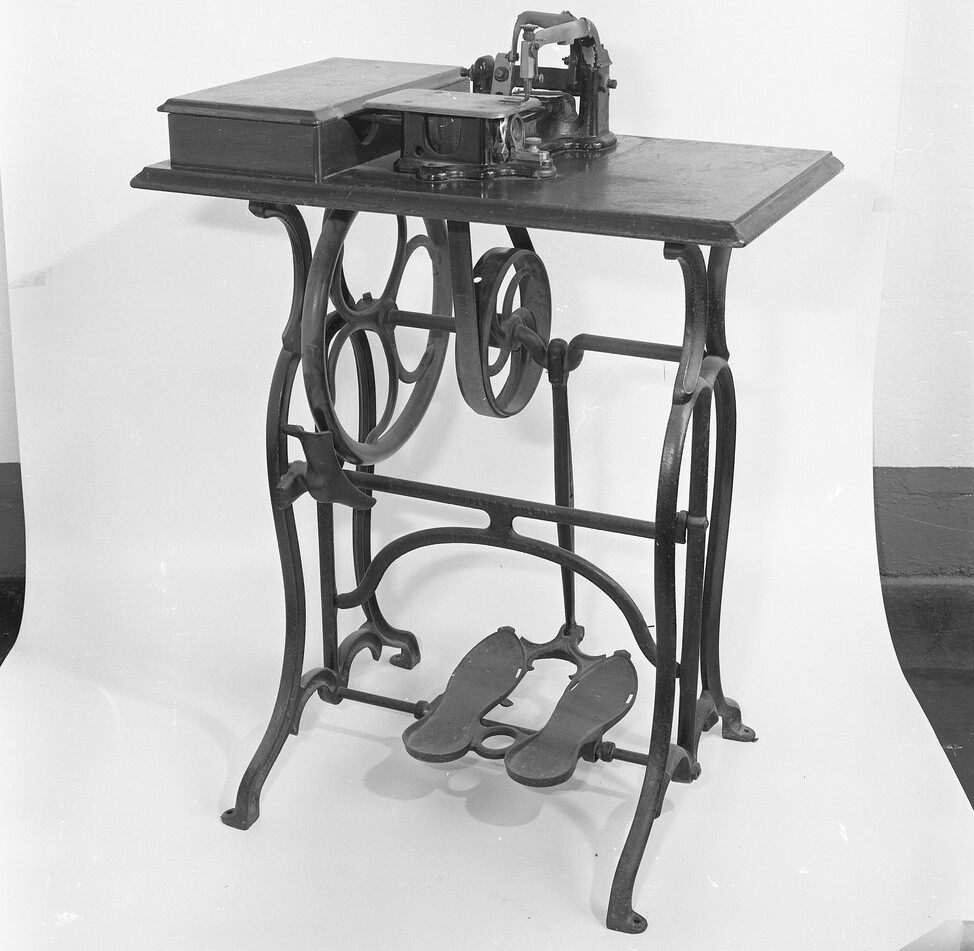
Anonymous
I lived in Weston-super-mare in the 1940s, attending the local infant and junior school. On the way home I would call in to see my grandmother, (Nanny). Ducking under the living room window, unlatching the back door and creeping into the living room (un-noticed?) I would surprise her by pulling on the hem of her dress, often while she was using her Singer treadle sewing machine. Usually I was offered a very sticky boiled unwrapped sweet (then Government rationed) or a freshly made home baked jam tart by lovely, kind Nanny.
She would be making a dress on the machine for local ladies who wanted their own choice of material and her skill as an alternative to the Government Scheme of branded “Utility” clothing of the wartime. She also made me a school blazer from green baize material. I remember particularly her habit of when using the treadle machine, even having two free hands, she was so busy concentrating on feeding the material to the needle that when a wisp of her hair fell onto her face she would remove it by blowing at it with puffed cheeks while operating the treadle.
MERL 81/130
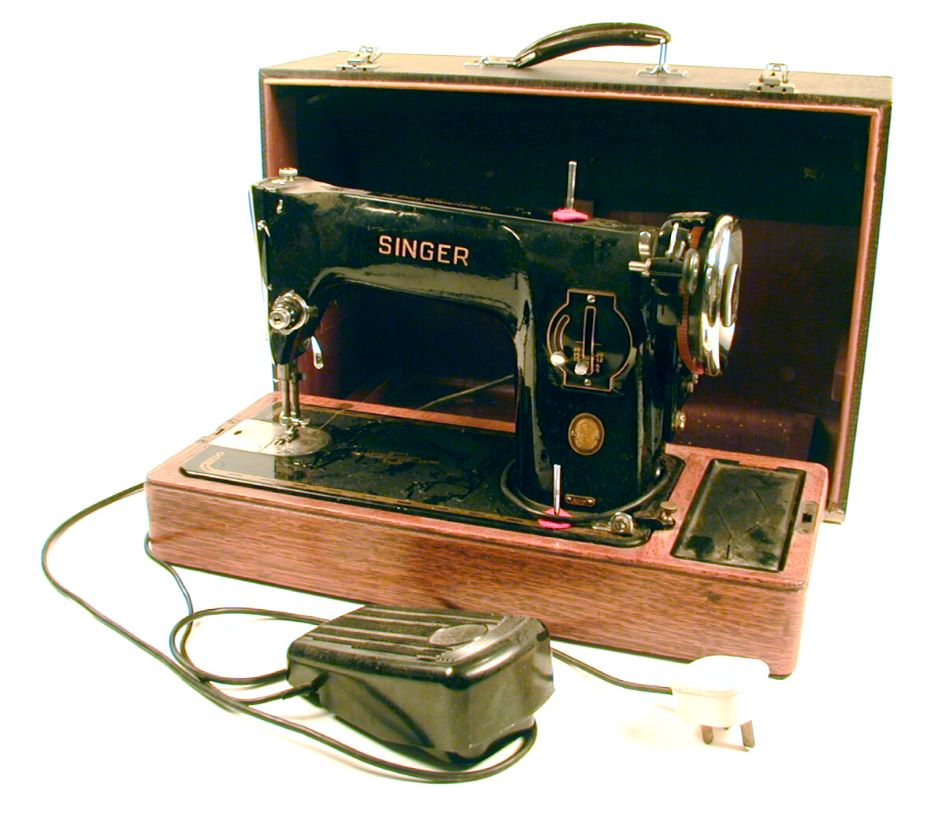
Gillian
I think sewing machines and their uses bring back times of safety and security, everything under control. The detail of the scenes they bring back is surprising – sight, colour, sound, are all stored away. I grew up in a household where there was an electric Singer sewing machine which ran smoothly and efficiently for years, apart that is, from the day when my mother stitched her finger to the fabric. I was old enough to run up the road and find a neighbour who had a toolbox and he came and released her!
I can see her threading up the machine, winding the bobbins and slotting them in place. I can hear the needle going up and down, the sound of the foot that kept it in place. I can see my mother with a mouthful of pins when she was unpinning a paper pattern from the cloth or marking the level of a hem line on a finished dress.
She made all her own clothes until she was in her 80s and always looked smart. Just writing that brings back another layer of memories, going shopping for vogue paper patterns, matching threads against a rainbow of colours, finding the buttons. I remember buying the fabric for my wedding dress too. These memories of a sewing machine bring back a secure home and happy childhood.
MERL 97/106
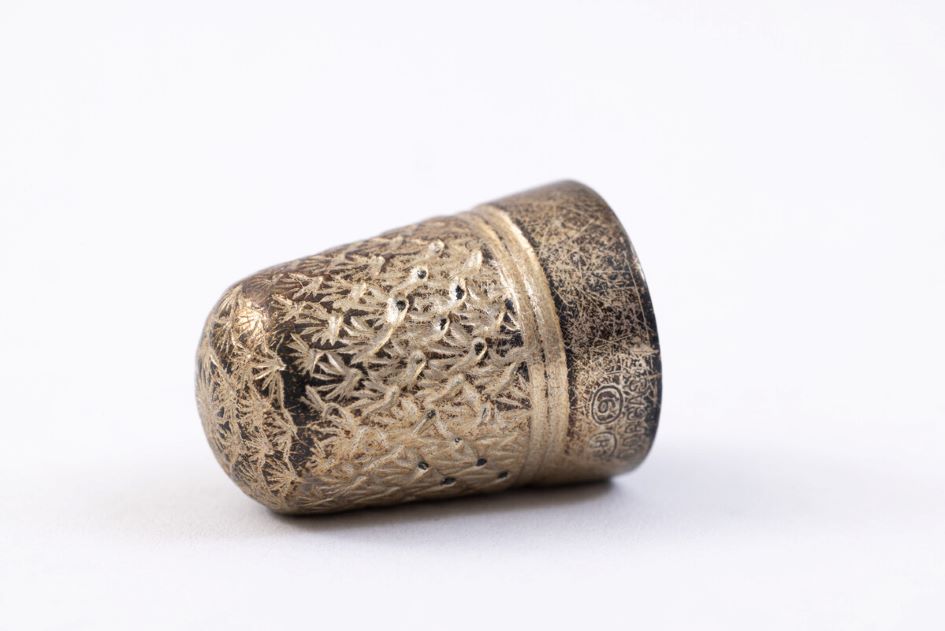
Faris
My mother used a sewing machine often. I remember, as a child, I used to play with her sewing tin. It was a blue Royal Dansk biscuit tin. It had a pin cushion that resembled a tomato.
My mother also had an extensive ceramic thimble collection. On holidays, I’d find them at beaches, museums and gift shops and save them for Christmas stocking fillers. She had coronation themed ones, golden shreds, ones with Cadbury chocolate, Norwegian ones, and many more.
MERL 76/232
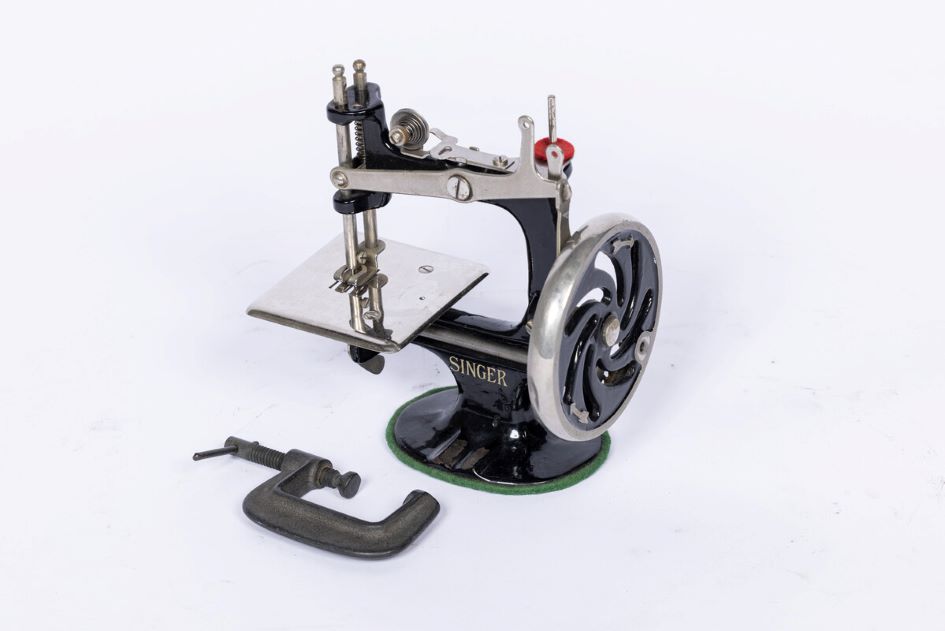
Teresa
My mother arrived in the UK from a refugee camp in Bwana Mkubwa, now in Zambia. Her first job in the UK (Derby) was in a sewing factory. At home we had a hand operated Singer and a treadle. My mum and grandmother made pretty much everything in the house containing fabric – clothes, including my school uniform, curtains, tablecloths, bedclothes etc. These items were often subsequently adorned with embroidery, for example, a crochet, in order to add character. An enduring memory of my childhood is threading needles – I was very young in comparison to the rest of my family, and proud to have this pivotal role, and pretty good eyesight!
MERL 81/36

Annette
My mother-in-law, born 1906, moved to Bury, Lancashire when she married. Her favourite place was Bury market (famous for clothing Coronation Street) where all types of material were sold. Her favourite object was a Singer treadle machine – still treddlable but now converted to electric.
She made everything – including suits for my husband from Harris tweed, which were very heavy to wear and hot.
Also, every holiday spent at my grandmother’s – what we did was sew. I can’t quite believe it but I made many of my own clothes on her Singer until I was 23. Haven’t touched it since.
MERL 2011/78/1-5
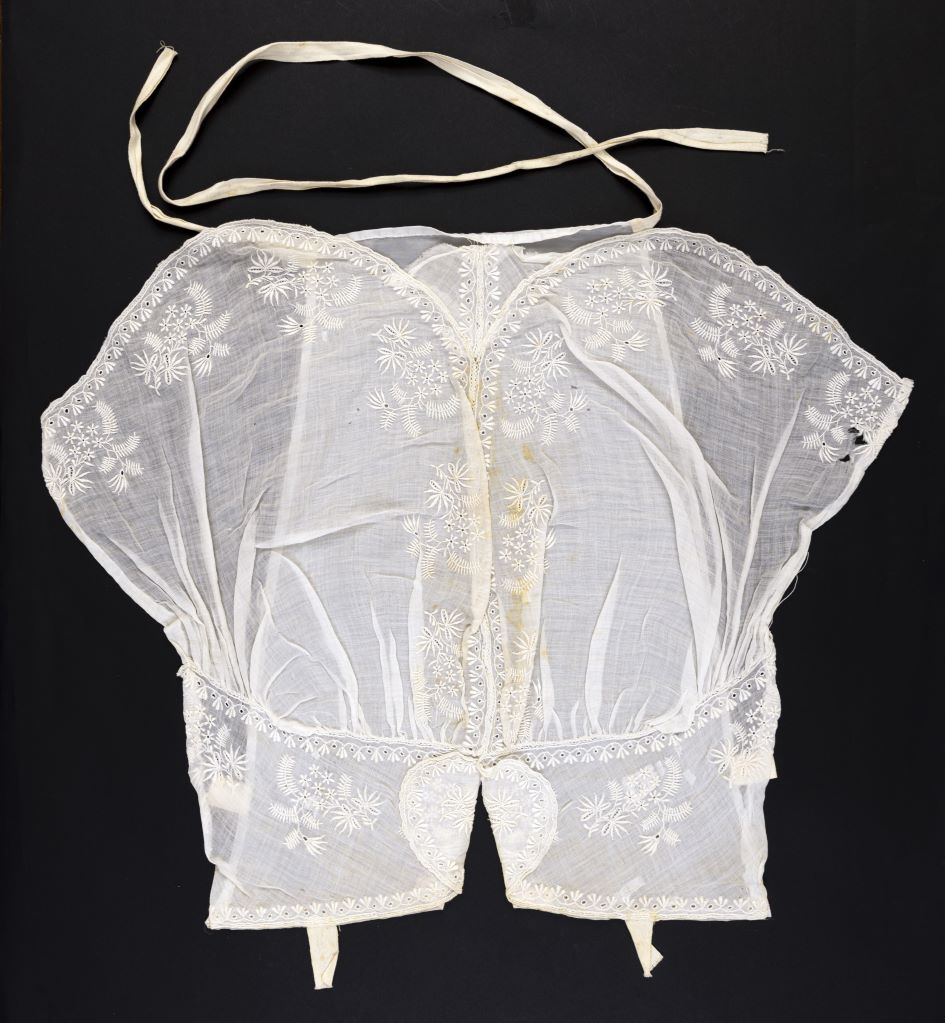
Anna
Whenever I see a sewing machine, it automatically reminds me of both of my grandmothers.
Firstly, my Nana (Mum’s side of the family). This wonderful lady looked after me multiple times a week while my parents were both working, for my entire childhood. I still go to see her as often as I can. Nana worked in a Leicestershire clothing factory for her entire career, following in her mother’s footsteps. As soon as I was old enough, Nana would set up sewing activities to do with me, and we would make things like little bags and aprons for me to play with. She would take me to fabric shops, and we would go to market on Saturdays to buy buttons. Sadly as I grew older I lost interest in sewing, but never forgot what Nana had taught me.
I began university, having not sewn for several years, but then Covid began. Living back at home I learnt about the damage face masks were doing to the ears of NHS staff, and decided to help by making ‘PPE Pals’. Although I began by hand-stitching these, my Granny (Dad’s side of the family) decided to gift me a Singer sewing machine which she was given in the 1960s, to speed up the process and save my hands. Together, my Granny and I managed to produce enough ‘PPE Pals’ to be able to give one each to nurses on three different hospital wards. Even as Covid lockdowns began to lift, I continued sewing on that old Singer machine, and began making toys from recycled clothing.
I am proud to say that at twenty two years of age, sewing remains my favourite hobby and always makes me feel closer to both of my grandmothers.
MERL 68/311
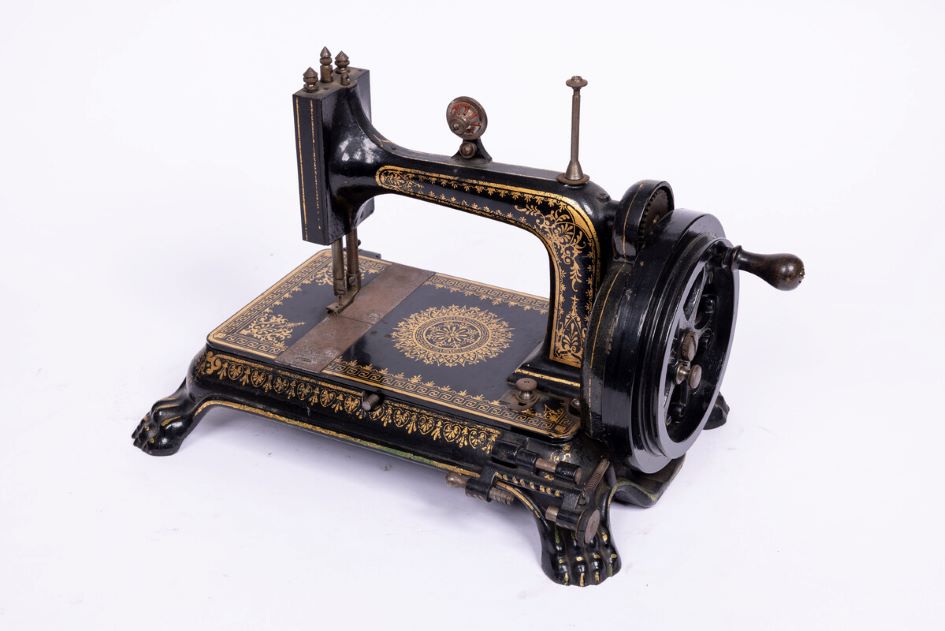
Sean
Back in Dublin as a child, my Mum had a hand-cranked machine. The wheel was loose and it was my job to tighten it every day so that she could repair our clothes. With seven brothers and sisters this was a full time job. We would sit in my father’s grocery shop helping to repair clothing and making small items for family members from clothing which was beyond repair, as we could not afford to buy gifts. Every year for Christmas, we would be given an allowance which had been collected over months. We would all go to the local market and buy some fabric for a new jacket, shirt or pair of trousers. These were the only clothes which we owned which weren’t handed down, and we loved them. Even now, whenever I go with my wife or Granddaughter to a market and see a fabric stall I think of my childhood and these new clothes which meant so much to us.
MERL 81/43
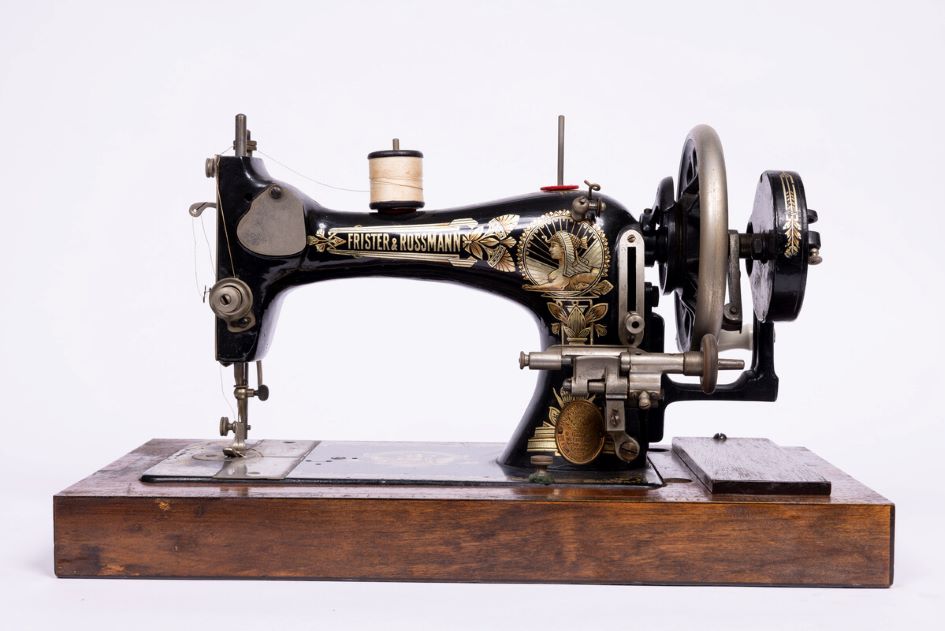
Christine
For me, a sewing machine represents my mother. She was born in 1926 and was a product of the ‘waste not, want not’ generation. Nothing was thrown away if it could be re-used or re-purposed. When sheets became worn in the middle they were ‘turned’ sides to middle or they were turned into pillow cases using the sewing machine. When collars on my father’s shirts became worn they were unpicked, taken off and turned so the worn bit was on the outside but hidden by the turned down collar and the new material was on the inside against the neck. This doubled the life of a good cotton shirt.
My mother was given a Singer sewing machine for her 21st birthday in 1947, a significant investment by her parents. This enabled her to make and mend her own clothes, which was important during rationing after the war. It also led to her making clothes for me which I wasn’t always grateful for!
She got a new sewing machine as a 25th wedding anniversary present in 1978, a Frister & Rossmann Cob 4 which was more technically advanced & allowed zips and buttonholes to be done with ease. My mother used this machine for many years. When she died in 2021 aged 94 I kept the newer machine but regretfully dispensed with the Singer. I have inherited her dressmaking skills but won’t inflict my creations on anyone else!
MERL 81/79
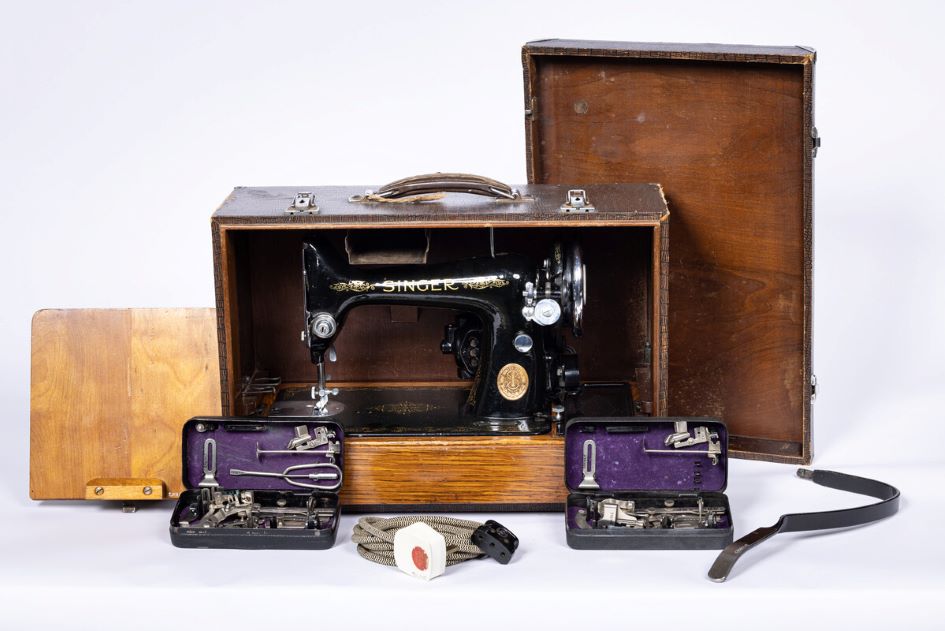
Susan
One of my earliest childhood memories of sewing machines (when I was about 5 years old in about 1944) was gazing, awestruck, at a very large roomful of about thirty young women machinists busily making school uniforms on Singer sewing machines in my mother’s school clothing factory, H. H. Bennett & Co. Limited, in Bedford. One line of girls would make sleeves, another collars and others would put the garment together, the least experienced doing the simpler tasks. Drivers would also deliver garment pieces to outworkers working from home, often women combining work with childcare, who would put garment pieces together or do piecework, make huge quantities of individual garment pieces, such as sleeves. Later there was a creche for the children of women working in the factory.
MERL 2011/78